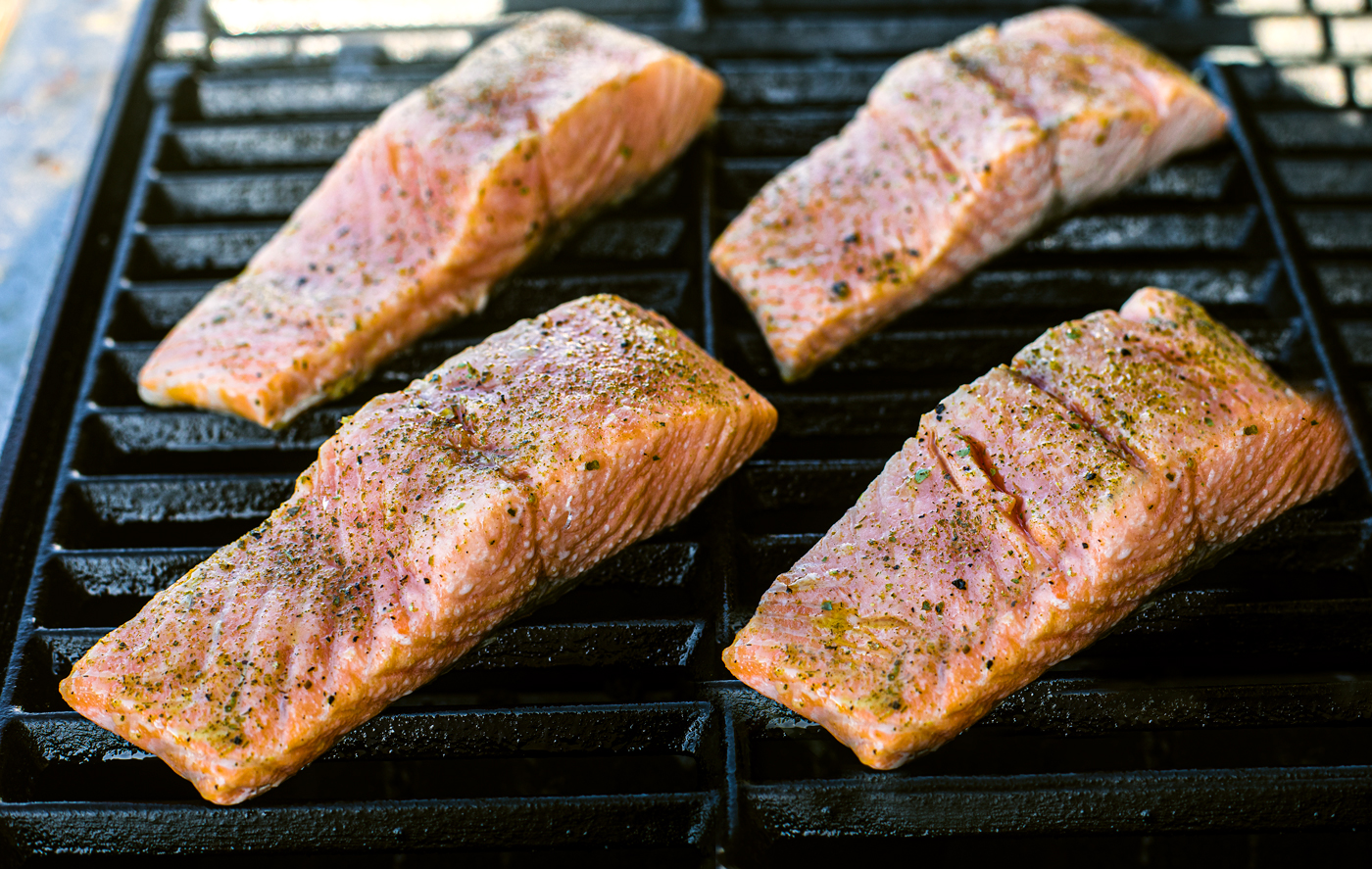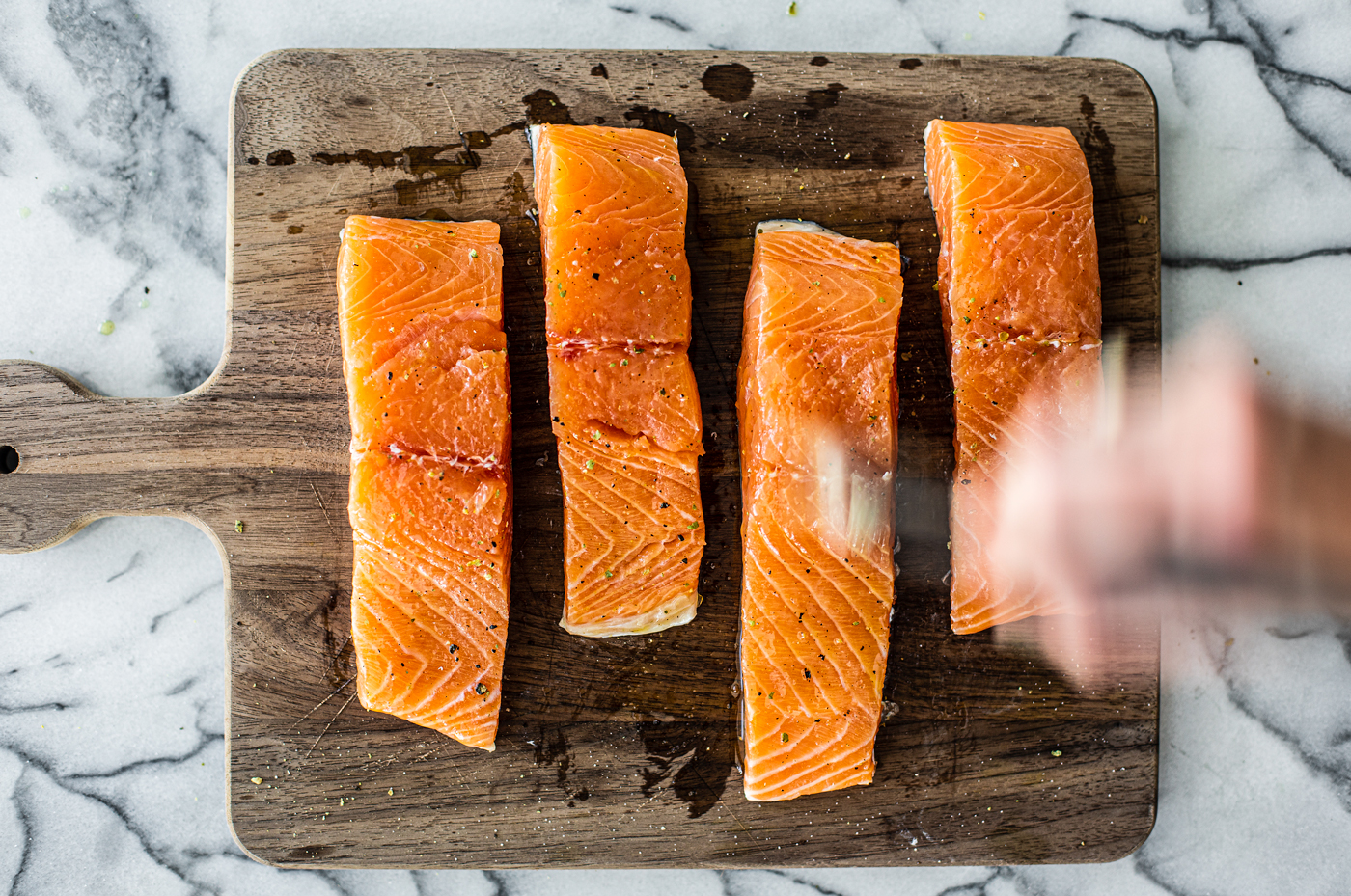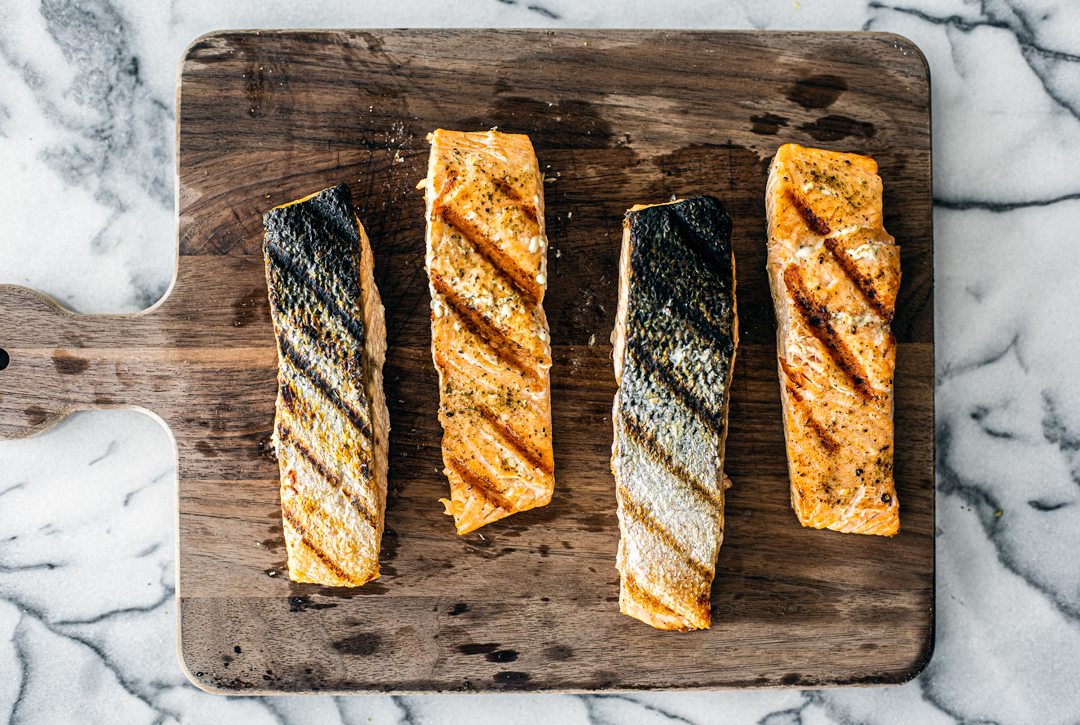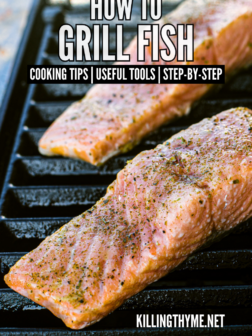This post contains affiliate links. Please see our disclosure policy.
Grilled fish is delicious, but if you’re not familiar with the process, it can be a disaster. Learn how to grill fish in this easy tutorial.

- Master the Art of Grilling Fish
- The Best Oil to Use for Grilling
- Useful Tools
- How Long to Grill Fish
- What Internal Temperature Should Fish Be
- The Process: How to Grill Fish Without It Sticking
- Grilled Fish Recipes to Try Out
- Want to learn how to grill fish on a cedar plank? Click here.
- Check out the fish and seafood guide for more information.
Table of Contents
- Master the Art of Grilling Fish
- The Best Oil to Use for Grilling
- Useful Tools
- How Long to Grill Fish
- What Internal Temperature Should Fish Be
- The Process: How to Grill Fish Without It Sticking
- Grilled Fish Recipes to Try Out
- Want to learn how to grill fish on a cedar plank? Click here.
- Check out the fish and seafood guide for more information.
Master the Art of Grilling Fish
Cooking fish in general can be intimidating. Even if it’s the slightest bit overcooked, both the texture and flavor can take an unfortunate turn. Bring grilling into the mix, and you’ve now got the added anxiety of your fillets falling apart if not tended to carefully.
This is common, but the good news is that it’s easy to avoid. There’s a lot to consider when grilling fish, but once you’ve got this knowledge under your belt, you should be able to pull it off flawlessly.
The Best Oil to Use for Grilling
First and foremost, you want to choose an oil with a high smoke point. Fish is typically grilled between 400-450º F, so you need an oil that can sustain that kind of heat. Otherwise you’re dealing with burnt oil that can become chemically altered. Here are some good choices for high heat cooking:
- Refined avocado oil (smoke point: 480-520º F)
- Lightly refined olive oil (390-479º F)
- Canola oil (400-475º F)
- Safflower oil (475-500º F)
- Peanut oil (450º F)
- Sunflower oil (450º F)
It’s important to note that though these oils are choice oils for high heat cooking, refined oils and seed oils aren’t great for overall health. They’re higher in inflammatory fats and are linked to chronic disease—so moderation is key!
Useful Tools
- Grill brush (never use a wire bristle brush; they can be dangerous)
- Cooking oil with a high smoke point (see the list above)
- Metal tongs
- Paper towels
- Metal fish spatula (a generic grill spatula will also work)
- Meat thermometer
How Long to Grill Fish
Grilling time will depend on the thickness of the fillet, of course. As a general rule, I like to set aside about 8-10 minutes of grill time total for fish, flipping the fish halfway through. So if you have a fillet that is an inch thick, grill each side for 4-5 minutes.
Something to note is that if you try to flip your fish over and your fish doesn’t want to release itself from the grill, don’t force it. This means it isn’t cooked and ready to be flipped yet, and forcing it will tear the fish. Simply wait another 30 seconds and attempt the flip again until your fish releases itself.
What Internal Temperature Should Fish Be
Fish should register between 140-145º F before it’s removed from the heat. I like to remove it around 140º F because the fish will continue to cook for a bit once it leaves the heat. This should yield a perfectly cooked, flaky fish!

The Process: How to Grill Fish Without It Sticking
1. Heat It and Grease It
- Start with VERY clean grates on your grill. Preheat the grill to 450º F.
- While the grill heats up, pour some of the cooking oil into a small bowl; gather your paper towels and your tongs.
- Once the grill is hot, dip a wad of paper towel into the cooking oil with tongs and glide it over the grates to create a slick surface. What you’re doing here is seasoning the grill, much like you would season a cast iron pan. Repeat this step 4-5 times until your grate is super slick!
2. Prepare Your Fish
- Take your fish out of the fridge about 15-20 minutes prior to cooking to bring it to room temperature. This helps you get an even cook on the fish.
- Brush both sides of each fillet with a generous amount of oil.
- Season the fillets with salt and pepper, and any other seasoning you might be using. Avoid using anything sweet since sugar burns on the grill.
3. Grill Your fish
- Place the fish onto the grill skin side down, diagonal to the grate slats.
- Reduce the heat to 400-425º F.
- Cover and cook for 4-5 minutes.
- Check on the fish by trying to carefully lift the fillet with a spatula. If the fillet doesn’t separate easily from the grate, leave it alone and check it again every 30 seconds until it releases itself. Fish and seafood won’t release from a cooking surface until that side is properly cooked—a little trick to keep in mind.
- Carefully flip the fish (using two spatulas for this makes things easier, but it’s optional). You can also use tongs, just don’t squeeze the fish too tightly.
- Cover again, and cook until the fish is done, which should be another 4-5 minutes. You’re looking for an internal temperature of 140-145º F. The flesh should be opaque.

Grilled Fish Recipes to Try Out
Now that you’re feeling confident to grill, here are some grilled fish recipes to try!
- Chili-Seasoned Grilled Mahi Mahi with Lime Butter
- Grilled Swordfish Steaks
- Grilled Tuna Steak Salad with Wasabi Vinaigrette
- Grilled Mahi Mahi Fish Tacos
- Easy Grilled Salmon Kebabs with Chimichurri
Want to learn how to grill fish on a cedar plank? Click here.
Check out the fish and seafood guide for more information.






